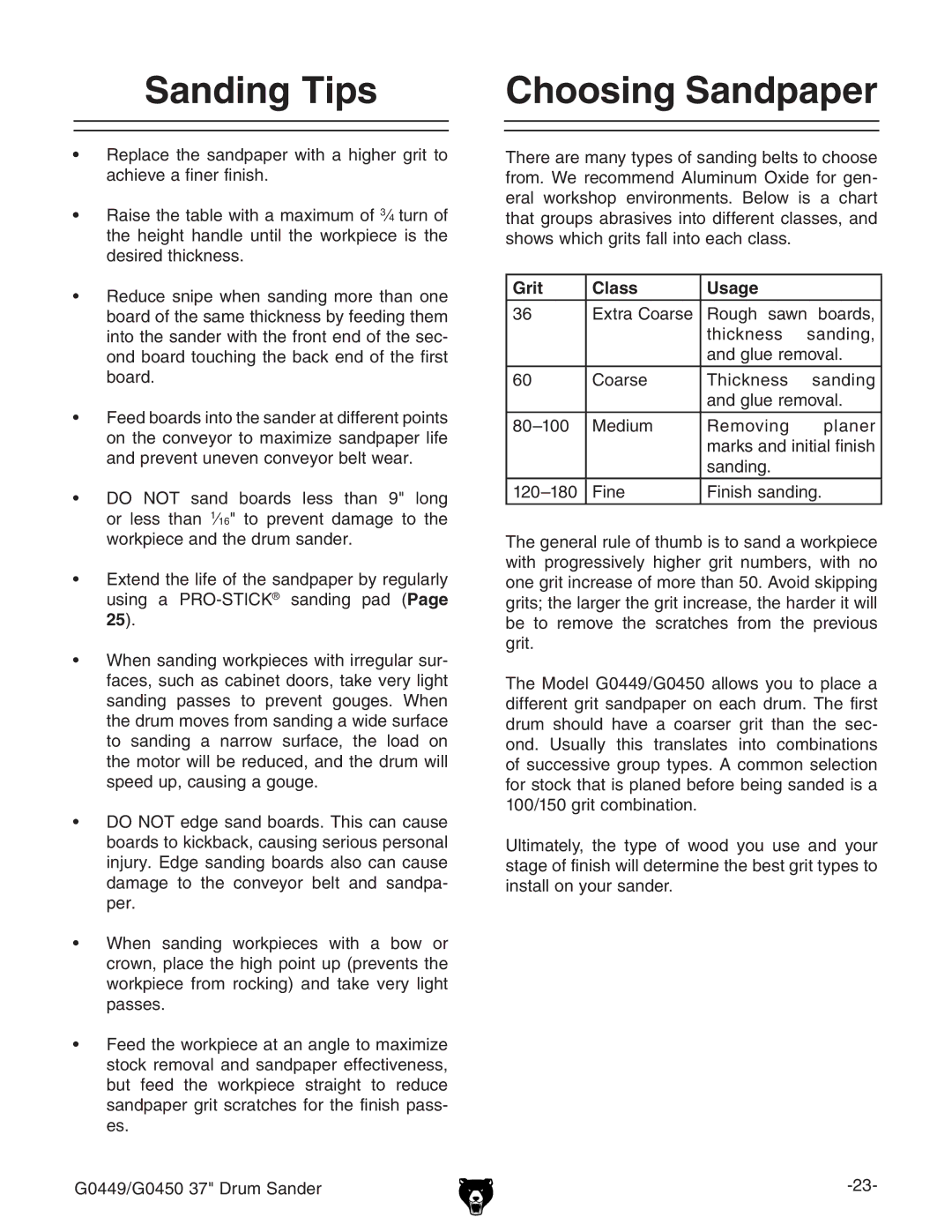
Sanding Tips
•Replace the sandpaper with a higher grit to achieve a finer finish.
•Raise the table with a maximum of 3⁄4 turn of the height handle until the workpiece is the desired thickness.
•Reduce snipe when sanding more than one board of the same thickness by feeding them into the sander with the front end of the sec- ond board touching the back end of the first board.
•Feed boards into the sander at different points on the conveyor to maximize sandpaper life and prevent uneven conveyor belt wear.
•DO NOT sand boards less than 9" long or less than 1⁄16" to prevent damage to the workpiece and the drum sander.
•Extend the life of the sandpaper by regularly using a
•When sanding workpieces with irregular sur- faces, such as cabinet doors, take very light sanding passes to prevent gouges. When the drum moves from sanding a wide surface to sanding a narrow surface, the load on the motor will be reduced, and the drum will speed up, causing a gouge.
•DO NOT edge sand boards. This can cause boards to kickback, causing serious personal injury. Edge sanding boards also can cause damage to the conveyor belt and sandpa- per.
•When sanding workpieces with a bow or crown, place the high point up (prevents the workpiece from rocking) and take very light passes.
•Feed the workpiece at an angle to maximize stock removal and sandpaper effectiveness, but feed the workpiece straight to reduce sandpaper grit scratches for the finish pass- es.
G0449/G0450 37" Drum Sander
Choosing Sandpaper
There are many types of sanding belts to choose from. We recommend Aluminum Oxide for gen- eral workshop environments. Below is a chart that groups abrasives into different classes, and shows which grits fall into each class.
Grit | Class | Usage |
|
36 | Extra Coarse | Rough sawn boards, | |
|
| thickness | sanding, |
|
| and glue removal. | |
60 | Coarse | Thickness | sanding |
|
| and glue removal. | |
|
|
|
|
Medium | Removing | planer | |
|
| marks and initial finish | |
|
| sanding. |
|
Fine | Finish sanding. | ||
The general rule of thumb is to sand a workpiece with progressively higher grit numbers, with no one grit increase of more than 50. Avoid skipping grits; the larger the grit increase, the harder it will be to remove the scratches from the previous grit.
The Model G0449/G0450 allows you to place a different grit sandpaper on each drum. The first drum should have a coarser grit than the sec- ond. Usually this translates into combinations of successive group types. A common selection for stock that is planed before being sanded is a 100/150 grit combination.
Ultimately, the type of wood you use and your stage of finish will determine the best grit types to install on your sander.
